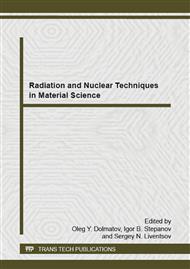p.3
p.7
p.11
p.16
p.21
p.26
p.30
p.34
Changes in the Spectral Characteristics of Aluminum Films Deposited under Assisting Argon Ion Beam
Abstract:
High-reflectance aluminum films are widely used in applied optics. As part of this work, we deposited aluminum films on glass substrates by magnetron sputtering using argon ion beam assistance. The reflectivity of the films obtained was measured on the SF-256 spectrophotometer. The microstructure and topology of the films were examined with a transmission electron microscope (TEM), X-ray diffraction (XRD) and atomic force microscope (AFM). The studies have shown that the aluminum films deposited with ion assistance have higher reflectance in the UV range than the films formed by magnetron sputtering alone. The results of TEM and AFM measurements show that the geometric factor (crystallite size, surface roughness) is not the reason for the increase of reflectivity. X-ray diffraction analyses have shown a significant increase in microstress in the aluminum films deposited with ion assistance, which is caused by an increase in the defect density of the vacancy-type crystal structure. The results have shown that the increase in the density of crystal defects leads to an increase in reflectance in the UV range.
Info:
Periodical:
Pages:
11-15
Citation:
Online since:
January 2015
Keywords:
Price:
Сopyright:
© 2015 Trans Tech Publications Ltd. All Rights Reserved
Share:
Citation:


